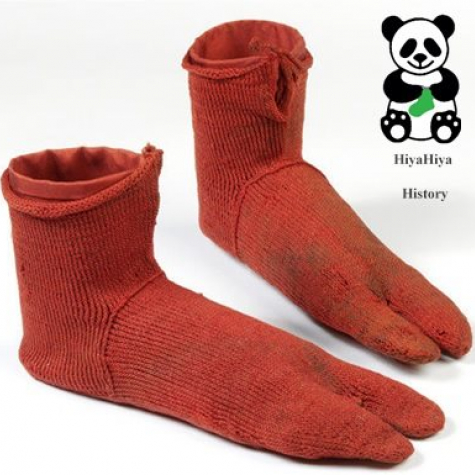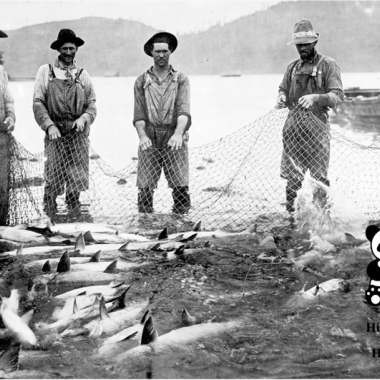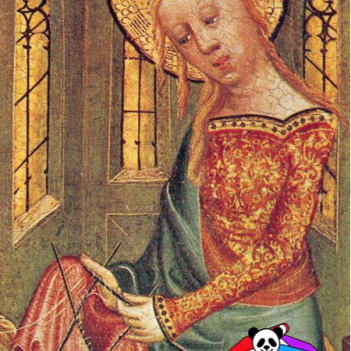Hiyahiya S History Of Knitting Autumn 2017
Every Thursday on our Facebook page we do a little throwback to the humble beginnings of knitting and crochet. We delve into the rich history of the craft which we love so much and we uncover the lost history of the needles, the yarns and the people who helped knitting grow into the popular past-time we know today. Here are our autumn throwback tales…
Were the Egyptians the World’s First Knitters?
The historian Richard Rutt wrote in 1987 that knitting probably developed from nalbinding in Roman Egypt. A sewing like process involving loops which was latterly used in conjunction with knitting in order to make footwear in the region. The fragility of the fibres that were used means that very few knitted garments have been able to survive and very little written ancient or medieval history about knitting actually exists. Knitting is therefore most likely even older than archaeological records can prove.
The oldest ‘knitted’ artefacts are socks from Egypt though. They could date from any time between the 1st and 11th centuries but some experts believe that these socks are just another example of nalbinding rather than knitting. They mostly agree that knitting was developed in this part of the world however, and that nalbinding can been seen as an ancestor of knitting. What is clear is that Egypt and the footwear of its ancient people played a large but still mysterious part in the birth of knitting. Take a look at these Egyptian socks, on display in the Victoria and Albert Museum in London.
The Evolution of Scottish Knitting
Knitting in Scotland can be dated back to the Middle Ages, but it was during the 16th and 17th centuries when it became more prominent. Highly skilled Scottish craftsmen would be paid to knit and they sold their products across the country. Soon though, their craft spread and the skill of knitting became common knowledge. By the 18th century knitting had become one of many cottage industries. For Scots, knitting became a way of earning money from their home and it was also a way of providing valuable items such as knitted stockings for your family.
Knitting and Fishing – A Match Made at Sea
The Knitting and fishing industries share a history which has been intertwined for centuries. A history which is said to have begun in ancient Arabian fishing villages. The practice of knotting fishnets is a skill which has been in existence for almost as long as fishing itself and it is presumed that this intricate skill is an ancestor of the type of knitting we know and love today. Fishermen may have been the world’s first knitters or they may have passed on their skills to other villagers who used their newly acquired skills to make clothing.
By the 18th and 19th centuries fishermen and knitting came into contact once again as British and Irish fishermen used commonly available wool to make themselves warm jumpers to use whilst at sea. They also developed popular styles such as the cable knit and they sold these knitted jumpers in order to bring in extra income on top of their daily catches.After the Industrial Revolution this industry died, however, the sailors and their iconic jumpers remain even to this day. That is not the end of the story though, sailors in the First and Second World Wars were kept warm by jumpers knitted by concerned mothers and daughters living on the home front. The Red Cross and warring governments even issued knitting patterns to their nation’s knitters so that their sailors were receiving jumpers and socks knitted to a good standard. Knitting, fishing and sailing have very unique histories but they are definitely more close-knit than you might originally think.Madonna and Medieval Europe’s Female Knitters
Knitting first hit the shores of Europe when the Spanish royal families of the thirteenth century employed Muslim knitters as skilled craftsmen. Knitted cushion covers and gloves were found in the tomb of Prince Fernando de la Cerda, who died in 1275. It is thought that by the fourteenth century knitting had spread across large parts of Europe and it was no longer the trade of highly skilled Muslims. Archaeological finds from medieval cities across Europe prove that knitted goods were in everyday use by the fourteenth century. Proof of this also exists in the form of paintings, however. From 1350, paintings of ‘The Knitting Madonna’ were appearing across Europe, including ‘Our Lady Knitting’ by Tommaso da Modena and ‘Madonna Knitting’ by Bertram Minden (pictured below), showing the speed at which knitting had woven its way into medieval popular culture.
